Greetings everyone, it is Brie the Plant Lady here with another “plant pick” to inspire you! My aim is to offer practical information about outstanding plants for the southeast. And this featured plant is truly extraordinary! With fragrant flowers in mid-winter, tropical looking foliage all summer, and a capacity to live in dense shade to part sun, Edgeworthia is a MUST GROW SHRUB! In fact, it is one of my 20 Must-Have Trees & Shrubs for Fragrance.
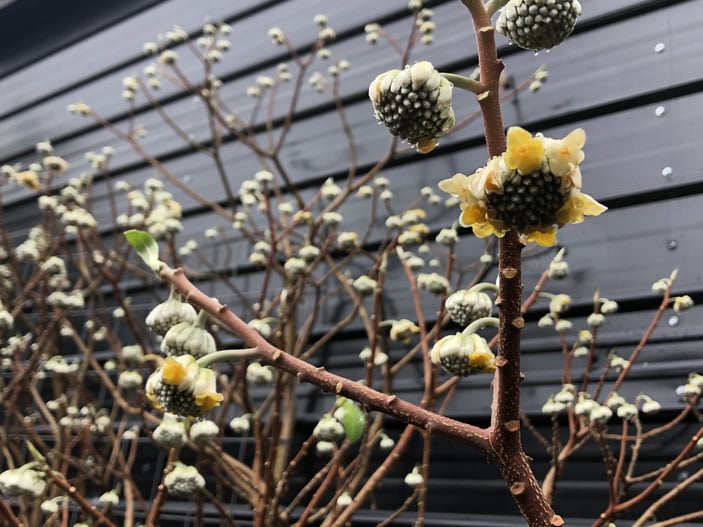
Edgeworthia should be planted in a spot where you can enjoy the scented blooms each winter.
Oriental Paper Bush
With the unusually warm weather we experienced over the holidays, there are a lot of plants blooming much earlier than usual. None are more welcome in my garden than the sweetly scented Oriental Paper Bush.
Are you familiar with Edgeworthia? This is a must have for gardeners in zones 7-9. Native to southwest China, Nepal, and Japan, the “paperbush” is in the Thymelaceae family, just like it’s highly fragrant relative Daphne. However, Edgworthia is much easier to grow.
The genus is named in honor of a brother and sister, writer Maria and amateur botanist Michael Edgeworth, who worked for the East India Company and were fascinated by this specimen growing along Asian stream banks. The common name of “paperbush” is a reference to its bark fibers which are used for making traditional Japanese paper called mitsumata. This durable paper has been used for centuries to create banknotes, so technically you are growing money when you include Edgeworthia in your garden!
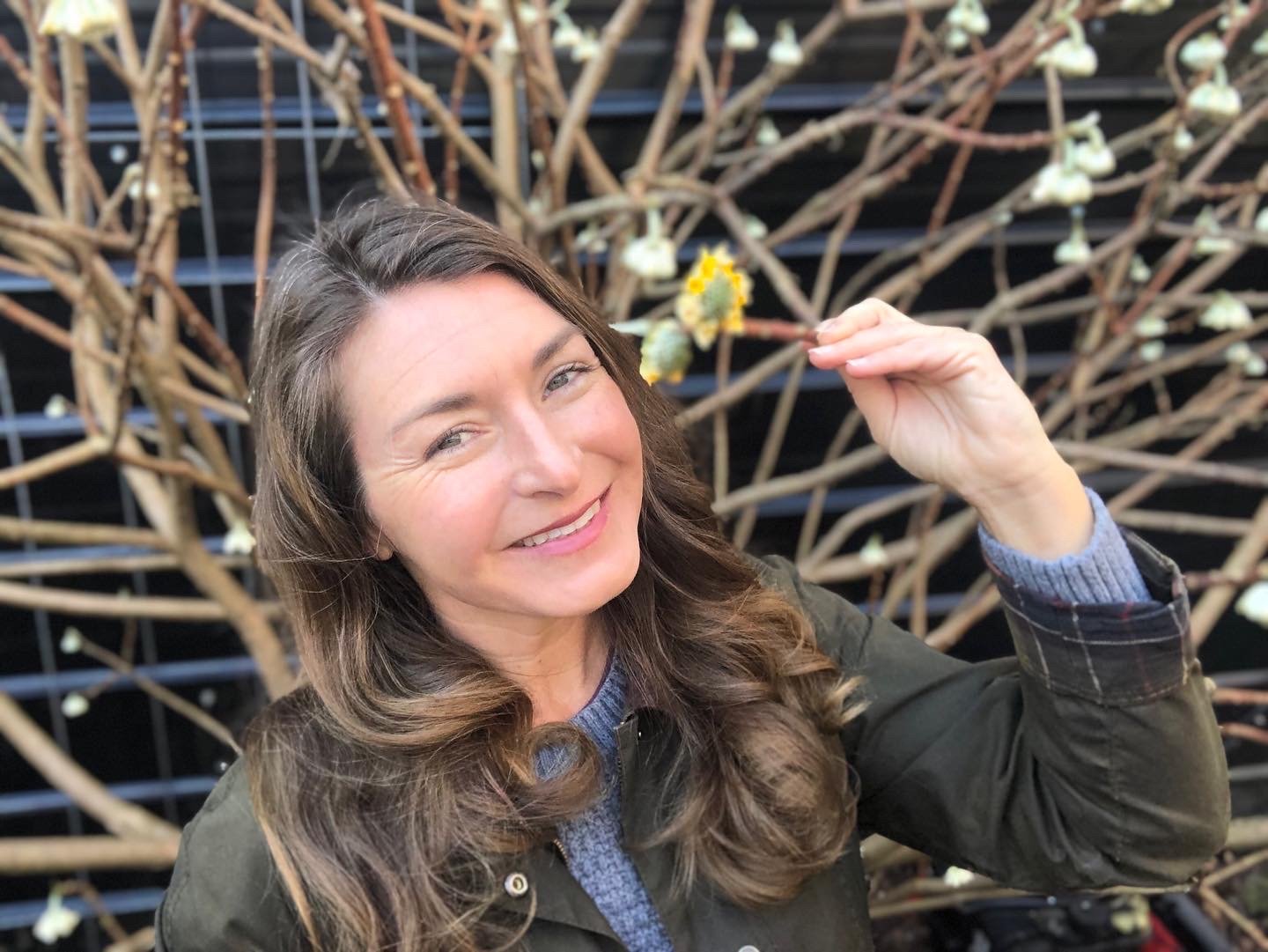
General Information
Choosing a site
This deciduous shrub is best grown in USDA zones 7-9, though it can be cultivated in warm zone 6 regions with extra care. The ideal location is “part-shade” meaning 4-6 hours of filtered sun, with some overhead cover to prevent scalding on hot days and protection from extreme winter conditions. In my garden, Edgeworthia are planted under deciduous trees and along the east facing woodland edge.
Oddly enough, my best plant is a rooted cutting that I propagated for an episode of Growing a Greener World back in 2014. It rooted through the pot and is now a staggering 12’ tall and wide. Being “planted” right next to a black metal building provides it extra protection and it also benefits from the French drain it has rooted into. Remember paperbush naturally grow along stream banks and river edges, which means they prefer moist conditions that are also well drained. This is not a plant for a boggy area where standing water is present for any length of time.
Planting
Edgeworthia like rich, moist soil which is why I recommend adding plenty of Soil³ to ensure your shrub will thrive year-round. When planting a new specimen, dig the hole at least two times the size of the pot and fill it with Soil³. I also top dress annually, adding about 2” of Soil³ around all my plants to keep them healthy.
Watering & Fertilizing
Be prepared to add supplemental water through the summer if the weather gets dry. This plant will wilt, just like a hydrangea, alerting you that it needs a drink! Fertilizing is quite simple, especially when you use Soil³ which provides a lot of nutrients. I just add a handful of organic, slow-release feed at the base of each plant every March.
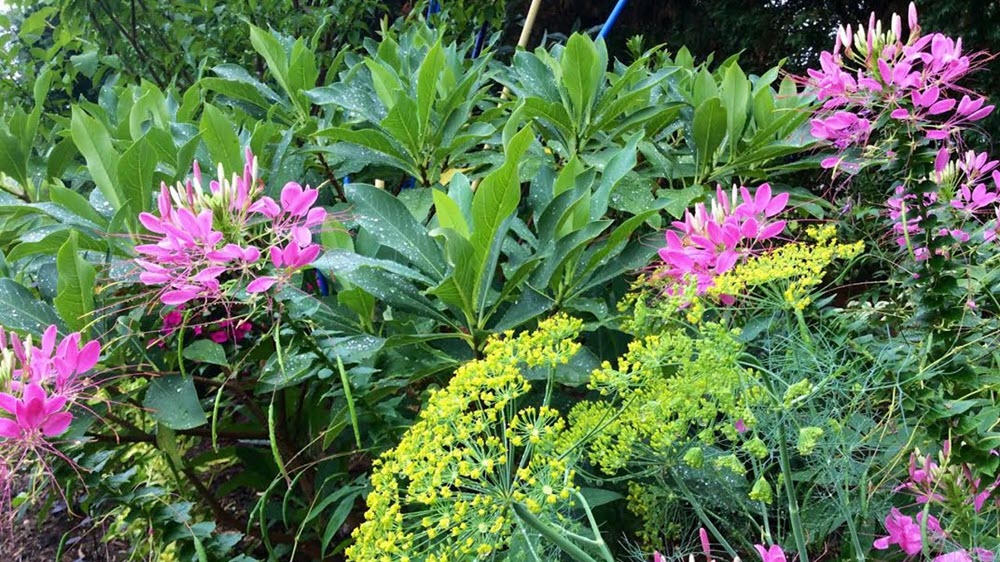
In the summer, Edgeworthia is full of lush green foliage. Here it makes a great backdrop for the colorful cleome and dill flowers.
With dark green, tropical, strap like foliage through the frost-free months, paperbush provides four seasons of beauty. The leaves will turn pale yellow before falling off in late autumn revealing the silvery flower buds on the top of each branch tip and delivering ample winter interest.
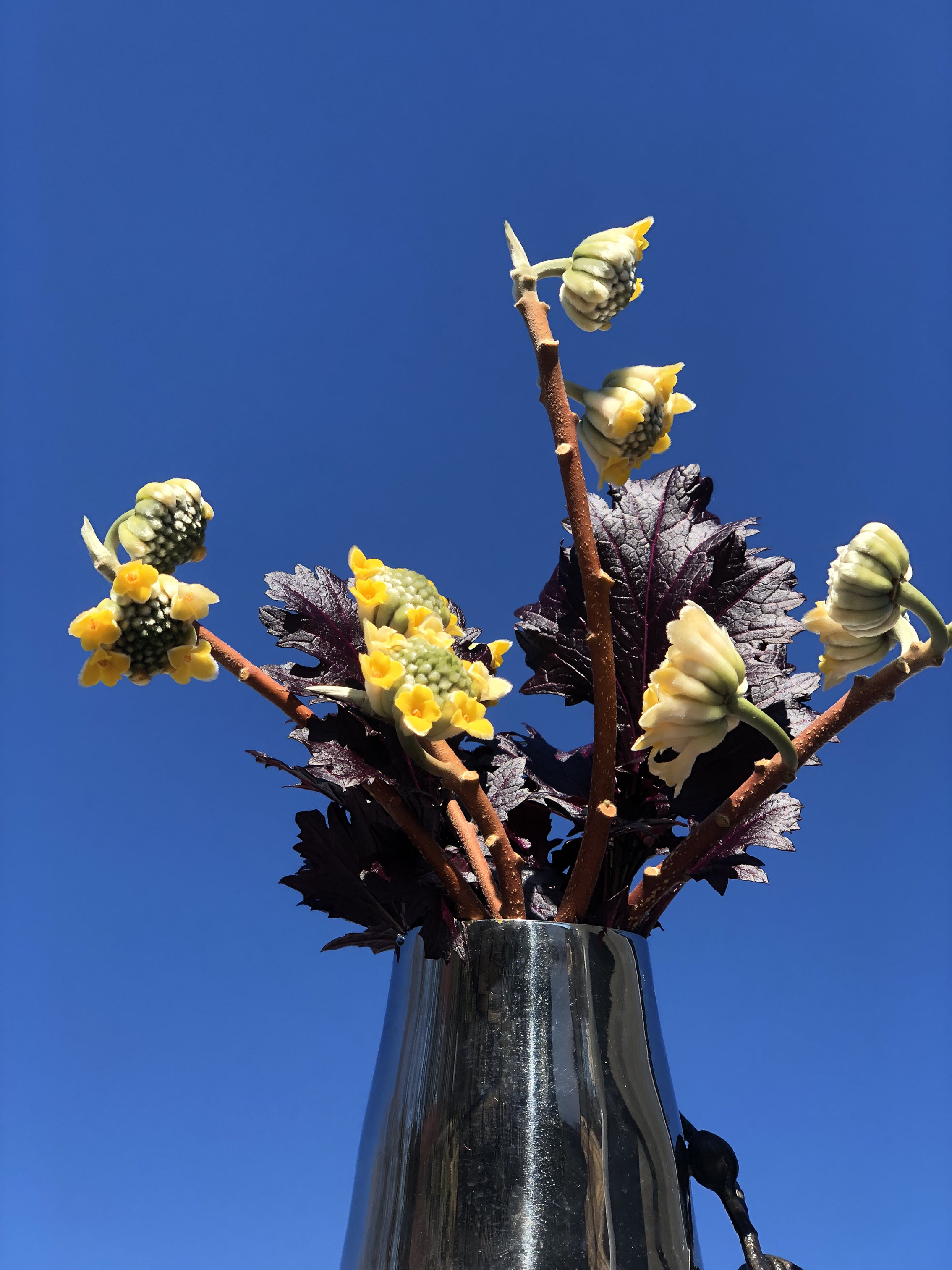
Pruning
The growing habit of the paperbush is quite interesting, as it seemingly always divides into three distinct branches. That lends itself to a naturally rounded habit with no pruning whatsoever!
If you do need to prune, wait until the flowers begin to open so you can enjoy the fragrance indoors. These branches are long lasting additions to traditional arrangements. The blooms can also be floated to create a unique display inside or out. That happens to be my favorite way to show off these cheerful, scented blossoms.
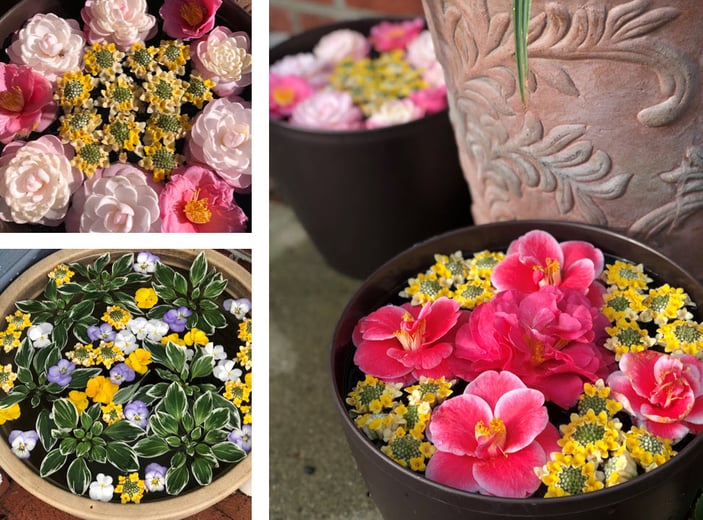
Edgeworthia flowers are a favorite in the floating displays near my house so I can enjoy the scent as soon as I step outside. Follow me on Instagram to see all my winter floating arrangements!
Pest free
This plant is well worth including in your garden for its fragrance alone. But add to that its relatively “deer resistant” nature and this becomes a top choice for gardeners living with hungry animals. In more than a decade on this property I have never once seen animal damage on my Edgeworthia specimens.
Effects of Winter Weather
This year the show started as we rang in the New Year. The furry buds began to open showing the bright yellow blossoms that smell like honey! Over a period of weeks, they continue to expand into brilliant, golden round balls.
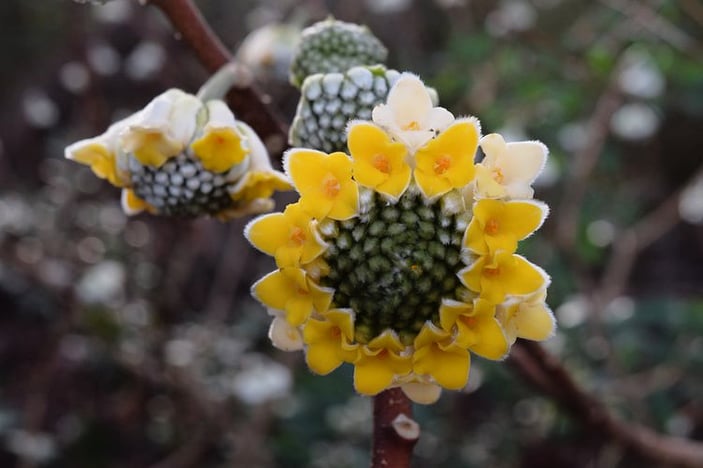
Early Frost
However, some years the weather can wreak havoc. Back in the autumn of 2019 we had an early hard frost in mid-November, and it really did a lot of damage to many Edgeworthia that had not yet hardened off. In fact, I lost EVERY SINGLE FLOWER that year!
The blooms weren’t the only casualty. The following spring, as the leaves were emerging, I noticed the foliage on the oldest stems was small and contorted. I opted to do a hard cut back, removing all the branches with impacted greenery. That strategy worked out well, as the plant rebounded quickly producing fresh stalks that have matured nicely. My rule of thumb is simple: if a plant is “ugly” cut it back and see if it will resprout.
While discussing the impact weather can have, it is important to address the general concerns about winter blooming species like Edgeworthia. As I mentioned above, the biggest problem that paperbush face are sudden, early freezes, where the plants have not had the opportunity to harden off. Generally, if temperatures gradually go from warm to cold the plants will properly acclimatize, and they will not suffer. However, if, like in 2019, temperatures suddenly go from very warm to well below freezing the plants can suffer extreme tissue damage.
Low Temperatures
But what about cold weather in January and February? “Usually” this is not going to cause a significant amount of damage. In some cases, blooms may fall off early, but most of the time if the plant has had the opportunity to get used to the cold all will be fine. Snow and ice are actually a benefit as they provide insulation from cold temperatures and wind. Because paperbush is deciduous, the branches don’t often break from the weight of winter precipitation.
Late Spring Frost
Late spring frosts, however, can be extremely damaging. One of the biggest challenges that gardeners in the southeast face relates to our irregular weather patterns. We can go from 80°F to 20°F in less than 24 hours, which is not only confusing for people but can result in a lot of damage to plants.
What should you do if your Edegworthia starts to grow foliage and then temperatures are predicted to drop below 32°F? This is when I recommend covering your plants with frost cloth, also known as remay. It is a lightweight material made from polyester or polypropylene so it won’t crush the branches, as a quilt or sheet can. This is the most effective approach for protecting your plants from late frost damage.
Interested in learning more about winter gardening and frost damage? Read my blog Winter Weather Gardening Tips where I discuss the pros and cons of winter protection. With twenty years of experience as a gardener in Zone 7 Raleigh, NC I have a lot of advice to share! And here is an excellent article from the University of Georgia's Department of Horticulture that explains this in detail: Effects of Low Temperature on Plants.
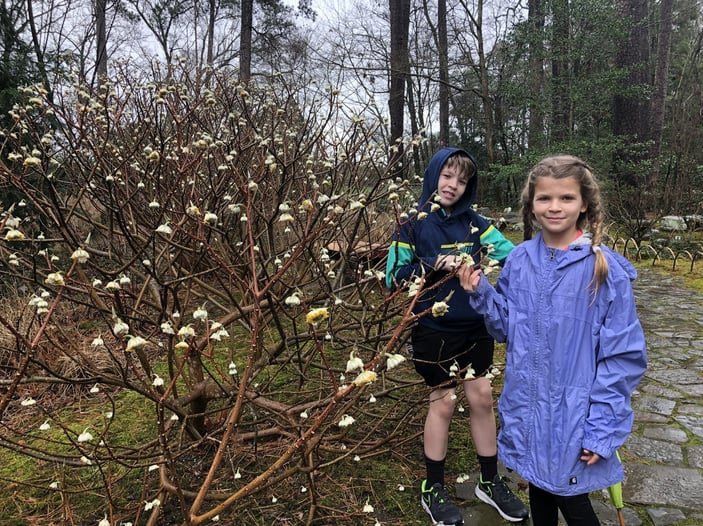
Varieties of Paperbush
The most cultivated paperbush is Edgeworthia chrysantha. The species name chrysantha is derived from the Greek word ‘chrysos’, meaning golden and 'anthos' meaning flower, relating to the clusters of fragrant yellow blooms in mid-winter. There are several different cultivars which offer varying growth habits.
Average ten-year size is about 8’x 8’ depending on the cultivar. ‘Gold Rush’ is a smaller statured variety growing to about 5’ tall and wide in ten years. A long-time favorite is ‘Snowcream’ introduced by Plant Delights Nursery, which can grow to 12’x 12’, so choose your location accordingly!
There is an on-going discussion regarding the distinction of two species. Decades ago, I learned that the smaller statured specimens were Edgeworthia papyrifera. With an overall and obvious difference in leaf, flower, and stem size it is hard for me to not distinguish one from the other. E. chrysantha is much more robust in all aspects. I suppose in the world of nomenclature I am a splitter not a lumper. Regardless of its name, I grow both types and highly recommend you do the same!
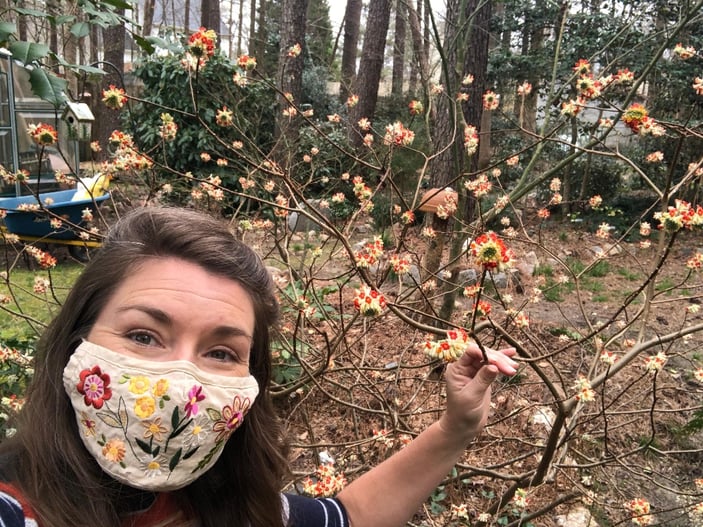
Edgeworthia papyrifera 'Akebono' is a hard-to-find variety with beautiful red blooms.
A noteworthy variety that I still categorize as an E. papyrifera is ‘Akebono’ sometimes sold as ‘Red Dragon’. With bright red, fragrant flowers, and a smaller overall habit, this lends itself as an excellent container specimen. Expect that it will grow to about 3’ X 3’ in ten years. Unfortunately, this seems to be out of stock at nurseries across the US. If you do come across one, buy it! I promise you won’t regret adding this to your collection.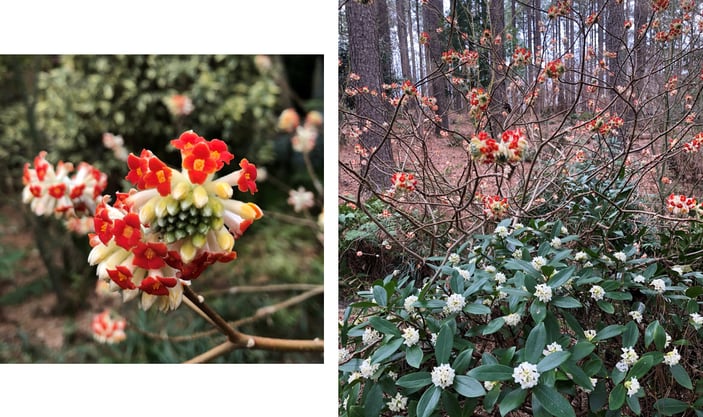
A beautiful pairing! Edgeworthia papyrifera 'Akebono' is seen here planted behind a daphne, another fragrant, winter blooming shrub.
| Botanical Details |
|
Botanical Name: Edgeworthia chrysantha
Common Name: Paperbush
Family: Thymelaceae
Hardiness: USDA Zones 7-9
Size: 10’ tall x 10’ wide
Location: Full shade to part sun
Soil: Moist and well-drained
Bloom Time: Winter
Foliage: Deciduous with yellow fall color
|
Happy Growing
Overall, I am a huge fan of paperbush and I think you will be too! There truly is nothing quite like these flowers on a cold winter day to remind you that spring is around the corner. Be sure to order your Soil³ before planting your Edgeworthia. The black magic compost of Soil³ is the secret to all my gardening success, especially with paperbush!
Brie

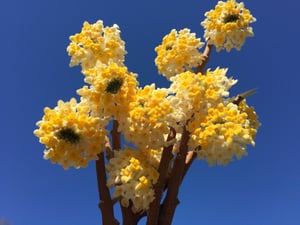

Did this help you out? Have any questions for clarity? Leave a comment below!